Isobaric Expansion Engines: New Opportunities in Energy Conversion for Heat Engines, Pumps and Compressors
Abstract
:1. Introduction
2. Isobaric Expansion Machines
2.1. Worthington Direct-Acting Steam Pump
2.2. Bush Thermocompressor Based Expansion Machines
3. Experimental Investigation
4. Efficiency of Isobaric Expansion Machines with Dense Working Fluids
4.1. Thermodynamic Modelling
4.1.1. Worthington-Type Engine
4.1.2. Bush-Type Engine
4.2. Estimation of the Regeneration/Recuperation Efficiency
4.3. Simulation Results
5. Discussion
5.1. General
5.2. Bush- and Worthington-Type Engines—Results and Comparison
5.3. Potential Improvements
5.3.1. Regeneration
5.3.2. Dead Volumes
5.3.3. Non-Isothermal Heat Supply
5.4. Hydraulic Output and Applications
5.5. Emerging Technologies
5.6. Final Remarks
6. Conclusions
Acknowledgments
Author Contributions
Conflicts of Interest
Nomenclature
| h | Specific enthalpie (J/kg) |
| m | Mass (kg) |
| P | Pressure (bar) |
| Q | Heat (J) |
| V | Volume (m3) |
| W | Work (J) |
| Greek Symbols | |
| η | Thermal efficiency (-) |
| ρ | Density (kg/m3) |
| Subscripts | |
| C | Cold, Cooling |
| E | Expansion chamber (steam cylinder) |
| H | Hot, Heating |
| min | Minimum |
| out | Outlet |
| P | Pump |
| R | Regenerator, Recuperator |
| tot | total |
References
- Macchi, E.; Astolfi, M. (Eds.) Organic Rankine Cycle (ORC) Power Systems: Technologies and Applications; Woodhead Publishing: Duxford, UK, 2016; p. 698. [Google Scholar]
- Invernizzi, C. Closed Power Cycles: Thermodynamic Fundamentals and Applications; Springer: London, UK; New York, NY, USA, 2013; p. 264. [Google Scholar]
- Lemmens, S. A perspective on cost and cost estimation techniques for organic Rankine cycle systems. In Proceedings of the 3rd International Seminar on ORC Power Systems, Brussels, Belgium, 12–14 October 2015. [Google Scholar]
- Quoilin, S.; Van Den Broek, M.; Declaye, S.; Dewallef, P.; Lemort, V. Techno-economic survey of Organic Rankine Cycle (ORC) systems. Renew. Sustain. Energy Rev. 2013, 22, 168–186. [Google Scholar] [CrossRef]
- Bao, J.; Zhao, L. A review of working fluid and expander selections for organic Rankine cycle. Renew. Sustain. Energy Rev. 2013, 24, 325–342. [Google Scholar] [CrossRef]
- Guoquan, Q.; Hao, L.; Saffa, R. Expanders for micro-CHP systems with organic Rankine cycle. Appl. Therm. Eng. 2011, 31, 3301–3307. [Google Scholar]
- Nesbitt, B. Handbook of Pumps and Pumping; Elsevier Science: Oxford, UK, 2006; p. 424. [Google Scholar]
- Bush, V. Apparatus for Compressing Gases. U.S. Patent 2,157,229, 17 July 1935. [Google Scholar]
- Gibson, B.M.; Hornbeck, C.J.; Longworth, R.C.; Harmison, L.T. Bypass Gas Actuated Thermocompressor as an Implantable Artificial Heart Power Source. In Proceedings of the 6th Intersociety Energy Conversion Engineering Conference, Boston, MA, USA, 3 August 1971; Paper No. 719043. pp. 310–316. [Google Scholar]
- Martini, W.R.; Johnston, R.P.; Goranson, R.B.; White, M.A. Development of a Simplified Stirling Engine to Power Circulatory Assist Devices. In Proceedings of the 3rd Intersociety Energy Conversion Engineering Conference, Boulder, CO, USA, 13–17 August 1968; Paper No. 689102. pp. 733–749. [Google Scholar]
- Martini, W.R. The Thermocompresor and its Application to Artificial Heart Power. In Proceedings of the 4th Intersociety Energy Conversion Engineering Conference, Washington, DC, USA, 22–26 September 1969; Paper No. 69015. pp. 107–114. [Google Scholar]
- Moise, J.C. Thermocompressor Powered Artificial Heart Assist System. In Proceedings of the 12th Intersociety Energy Conversion Engineering Conference, Newark, DE, USA, 17 August 1975; Paper No. 779017. pp. 112–118. [Google Scholar]
- Karassik, I.J.; Messina, J.P.; Cooper, P.; Heald, C.C. Pump Handbook, 3rd ed.; McGraw-Hill: New York, NY, USA, 2001. [Google Scholar]
- Walker, G.; Senft, J.R. Free Piston Stirling Engines; Springer: Berlin/Heidelberg, Germany, 1985. [Google Scholar]
- Brodjanskij, V.M. Compressor for Compression of Gases; USSR Autor’s Sertificat 244544. 1967. Available online: http://russianpatents.com/patent/230/2303162.html (accessed on 14 October 2017).
- Martini, W.R. Stirling Cycle Amplifying Machine. U.S. Patent 3,513,659, 2 February 1968. [Google Scholar]
- Martini, W.R. Stirling Cycle Amplifying Machine. U.S. Patent 3,604,821, 13 August 1969. [Google Scholar]
- Buck, K.E. Modified Stirling Cycle Engine—Compressor Having a Freely Reciprocable Displacer Piston. U.S. Patent 3,678,686, 20 February 1970. [Google Scholar]
- Eder, F.X. Gas Compressor Directly Driven through Heat Input. U.S. Patent 4,751,819, 19 October 1984. [Google Scholar]
- Ohrt, D. Process and Device for Conveying Boilable Liquids. U.S. Patent 4,954,048, 30 December 1988. [Google Scholar]
- Baumgardner, A.R. Stirling Cycle Machine with Self-Oscillating Regenerator. U.S. Patent 3,484,616, 1 February 1968. [Google Scholar]
- Walker, G. Stirling Engines; Clarendon Press: Oxford, UK, 1980; p. 532. [Google Scholar]
- Edwards, M.J.; Peterson, R.B. Reciprocating thermocompressor performance with non-ideal component characteristics. Proc. Inst. Mech. Eng Part A J. Power Energy 2007, 221, 459–472. [Google Scholar] [CrossRef]
- Kongtragool, B.; Wongwises, S. Thermodynamic analysis of a Stirling engine including dead volumes of hot space, cold space and regenerator. Renew. Energy 2006, 31, 345–359. [Google Scholar] [CrossRef]
- Huffman, F.N. Tidal Regenerator Heat Engine. U.S. Patent 3,657,877, 1 February 1971. [Google Scholar]
- Hagen, K.G.; Huffman, F. N.; Ruggles, A.E. Expansion Tidal Regenerator Heat Engine. U.S. Patent 3,986,360, 6 June 1975. [Google Scholar]
- Yarger, D.; Beck, M.; Peterson, R. Experimental Study of a Mesoscale Two-Phase Thermocompressor. In Proceedings of the 4th International Energy Conversion Engineering Conference and Exhibit (IECEC), San Diego, CA, USA, 26–29 June 2006. AIAA 2006-4014. [Google Scholar]
- Glushenkov, M.; Kronberg, A. Regenerative Heat to Mechanical Energy Converter with Dense Working Fluid. In Proceedings of the 16th International Stirling Engine Conference, Bilbao, Spain, 24–26 September 2014; pp. 177–186. [Google Scholar]
- Glushenkov, M.; Kronberg, A. Heat to Mechanical Energy Converter. WO Patent Application No. PCT/EP2012/064094, 18 July 2012. [Google Scholar]
- Oyewunmia, O.A.; Kirmsea, C.J.W.; Haslam, A.J.; Müller, E.A.; Markides, C.N. Working-fluid selection and performance investigation of a two-phase single-reciprocating-piston heat-conversion engine. Appl. Energy 2017, 186, 376–395. [Google Scholar] [CrossRef]
- Kirmsea, C.J.W.; Oyewunmia, O.A.; Taleb, A.I.; Haslam, A.J.; Markides, C.N. A two-phase single-reciprocating-piston heat conversion engine: Non-linear dynamic modelling. Appl. Energy 2017, 186, 359–375. [Google Scholar] [CrossRef]
- Knoke, T.; Kenig, E.Y.; Kronberg, A.; Glushenkov, M. Model-based analysis of novel heat engines for low-temperature heat conversion. Chem. Eng. Trans. 2017, 57, 499–504. [Google Scholar]
- Kemp, I.C. Pinch Analysis and Process Integration: A User Guide on Process Integration for the Efficient Use of Energy; Elsevier: Oxford, UK, 2007. [Google Scholar]
- Bu, X.; Wang, L.; Li, H. Performance analysis and working fluid selection for geothermal energy-powered organic Rankine-vapor compression air conditioning. Geotherm. Energy 2013, 1. [Google Scholar] [CrossRef]
- Hesselgreaves, J.E. Compact Heat Exchangers; Selection, Design and Operation; Elsevier: Pergamon, Turkey, 2001; p. 416. [Google Scholar]
- Zochuri, B. Compact Heat Exchangers: Selection, Application, Design and Evaluation; Springer: Cham, Switzerland, 2017; p. 559. [Google Scholar]
- Date, A.; Akbarzadeh, A. Theoretical study of a new thermodynamic power cycle for thermal water pumping application and its prospects when coupled to a solar water pond. Appl. Therm. Eng. 2013, 58, 511–521. [Google Scholar] [CrossRef]
- Date, A.; Ghaisas, S.V.; Date, A.; Akbarzadeh, A. Investigating the prospects of using novel thermal power pump cycle coupled with reverse osmosis system for water desalination. In Proceedings of the 3rd International Conference on Environment Energy and Biotechnology, Bangkok, Thailand, 18–19 December 2014; Volume 70, pp. 132–136. [Google Scholar]
- Venkatarathnam, G. Cryogenic Mixed Refrigerant Processes; Springer: Berlin, Germany, 2010; p. 262. [Google Scholar]
- Boiarski, M.J.; Brodianski, V.M.; Longsworth, R.C. Retrospective of Mixed-Refrigerant Technology and Modern Status of Cryocoolers Based on One-Stage, Oil-Lubricated Compressors. Adv. Cryog. Eng. 1998, 43, 1701–1708. [Google Scholar]
- Vasanthakumar, P. Investigation of centrifugal pump as Turbine: A review report. Int. J. Eng. Res. Technol. 2014, 3, 2287–2292. [Google Scholar]
- Agarwal, T. Review of pump as turbine (PAT) for micro-hydropower. Int. J. Emerg. Technol. Adv. Eng. 2012, 2, 163–169. [Google Scholar]
- Martini, W.R. The Stirling engine piezoelectric (STEPZ) power source concept for space applications. Trans. Am. Nucl. Soc. 1972, 15, 607. [Google Scholar]
- White, M.A.; Mc Donnel Douglas Astronautics Company. Proof-of Principle Investigation of 300 W(E) Stirling Engine Piezoelectric (STEPZ) Generator; Final Technical Report; National Technical Information Service: Springfield, VA, USA, 1973. Available online: http://www.dtic.mil/dtic/tr/fulltext/u2/768690.pdf (accessed on 14 October 2017).
- Martini, W.R. Stirling Engine Power System and Coupler. U.S. Patent 3,822,388, 26 March 1973. [Google Scholar]
- Malik, M.J. Stirling Cycle Drive for an Electrokinetic Transducer. U.S. Patent 3,400,281, 27 November 1964. [Google Scholar]
- Catalano, J.; Bentien, A.; Østedgaard-Munck, D.N.; Kjelstrup, S. Efficiency of electrochemical gas compression, pumping and power generation in membranes. J. Membrane Sci. 2015, 478, 37–48. [Google Scholar] [CrossRef]
- Xie, Y.; Bos, D.; de Vreede, L.J.; de Boer, H.L.; van der Meulen, M.J.; Versluis, M.; Sprenkels, A.J.; van den Berg, A.; Eijkel, J.C.T. High-efficiency ballistic electrostatic generator using microdroplets. Nat. Commun. 2014, 5, 3575. [Google Scholar] [CrossRef] [PubMed]
- Krupenkin, T.; Taylor, A.J. Reverse electrowetting as a new approach to high-power harvesting of mechanical energy. Nat. Commun. 2011, 2, 448. [Google Scholar] [CrossRef] [PubMed]
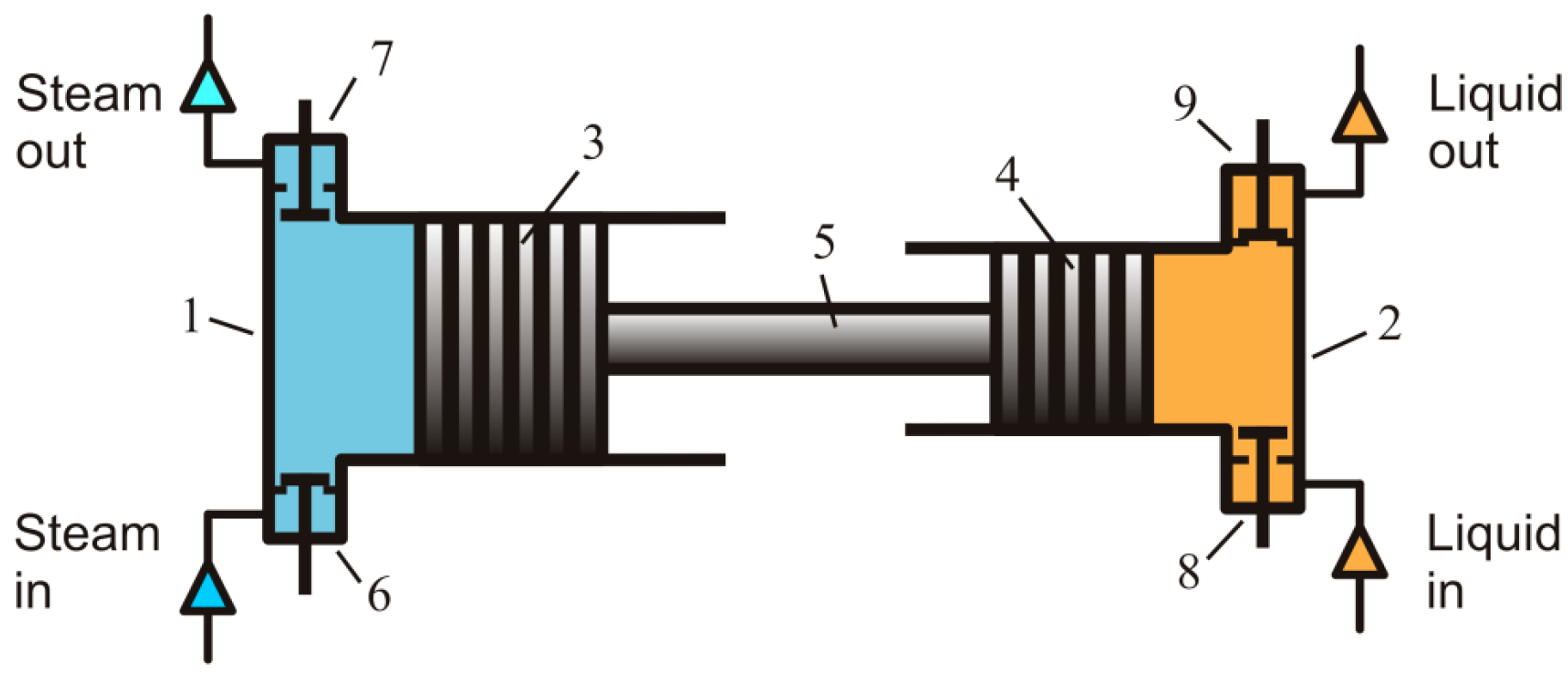

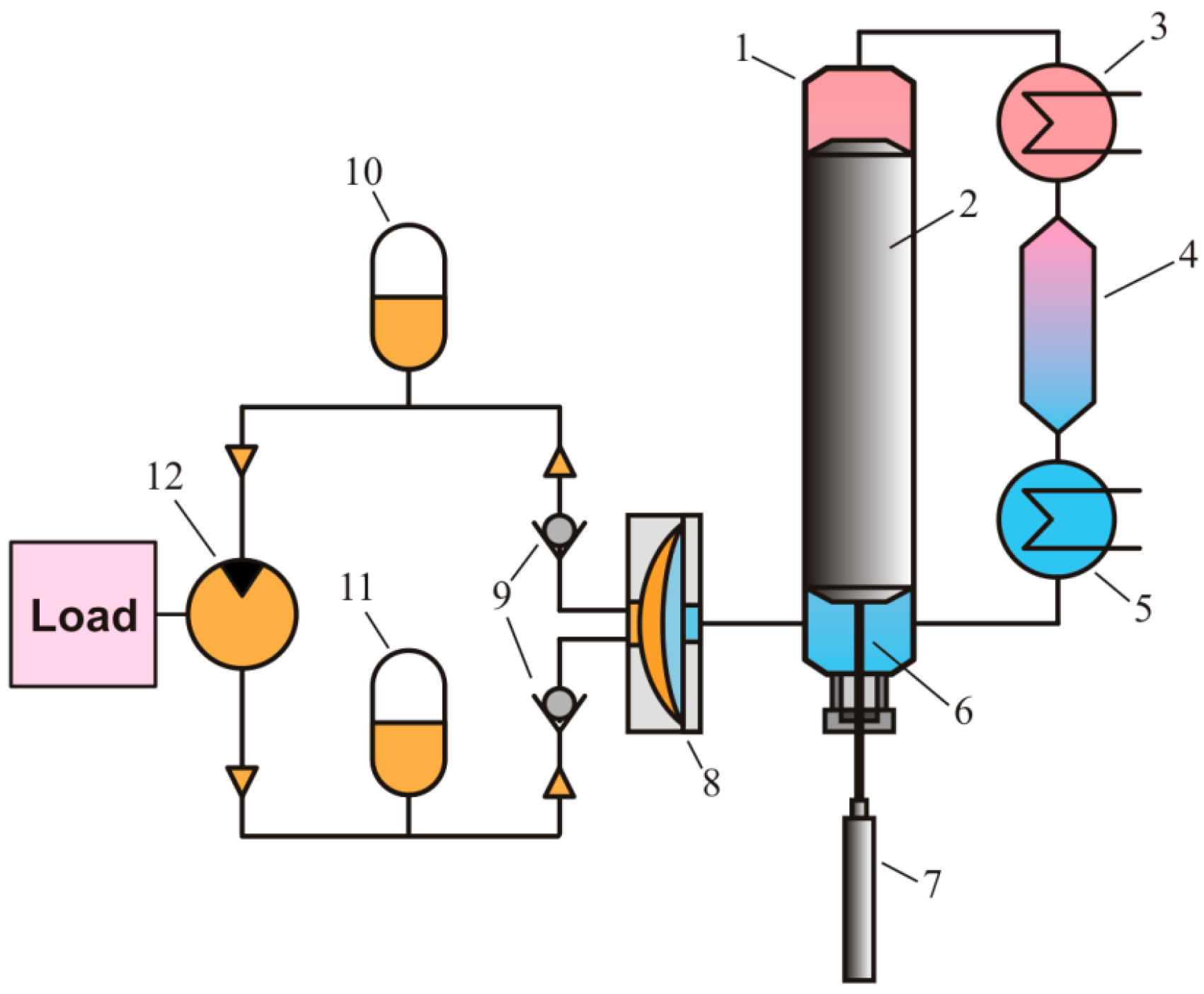
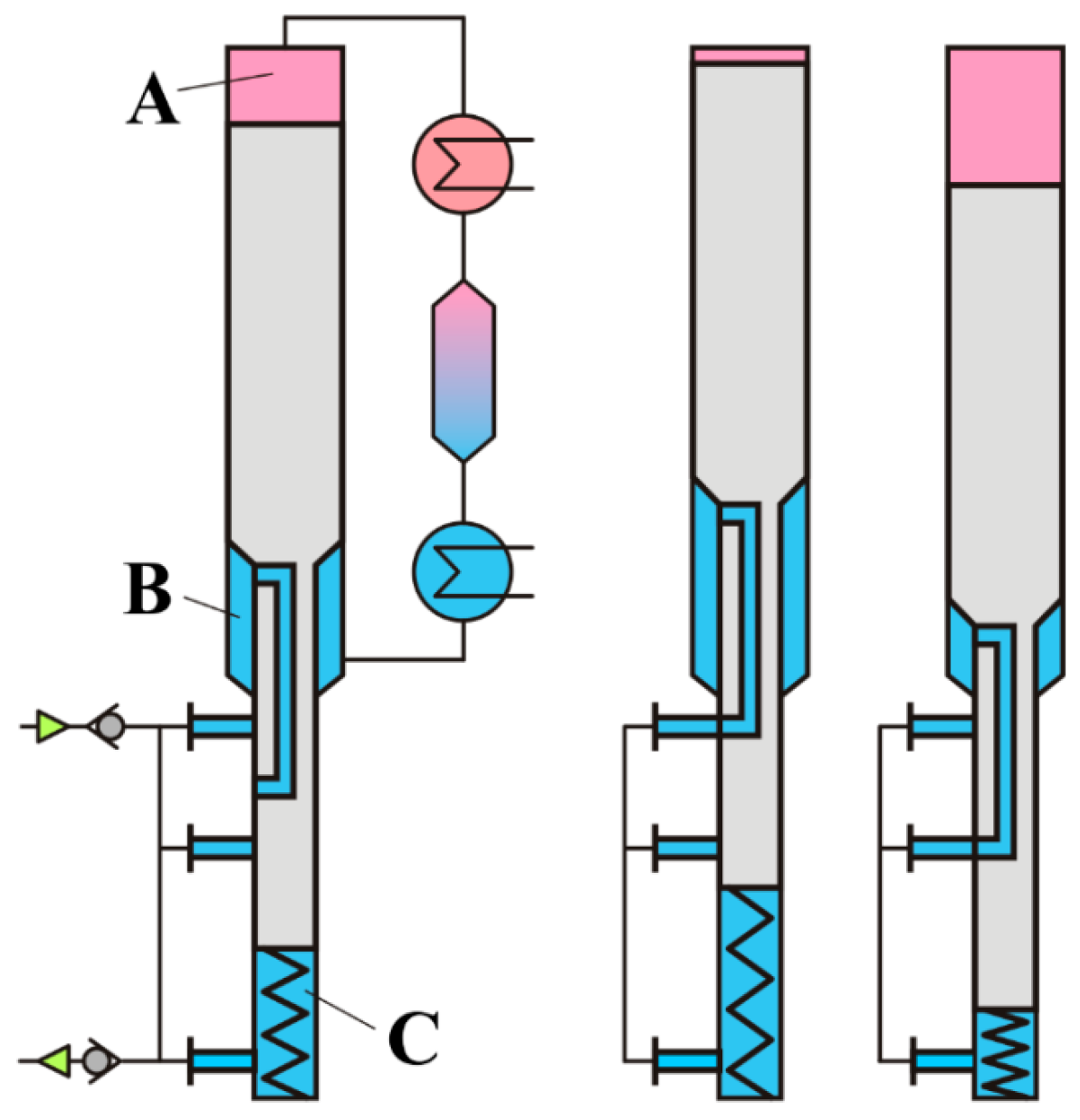
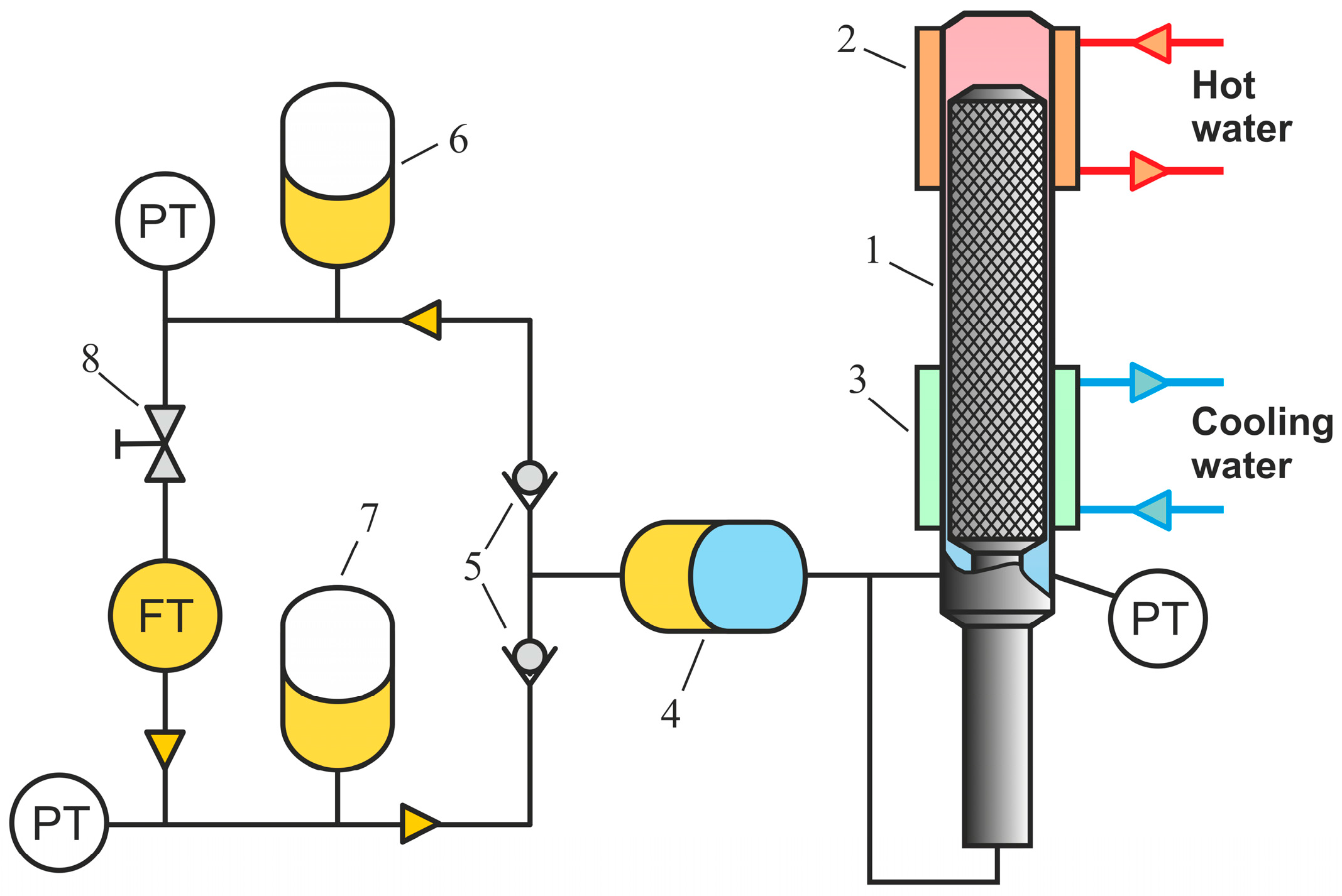

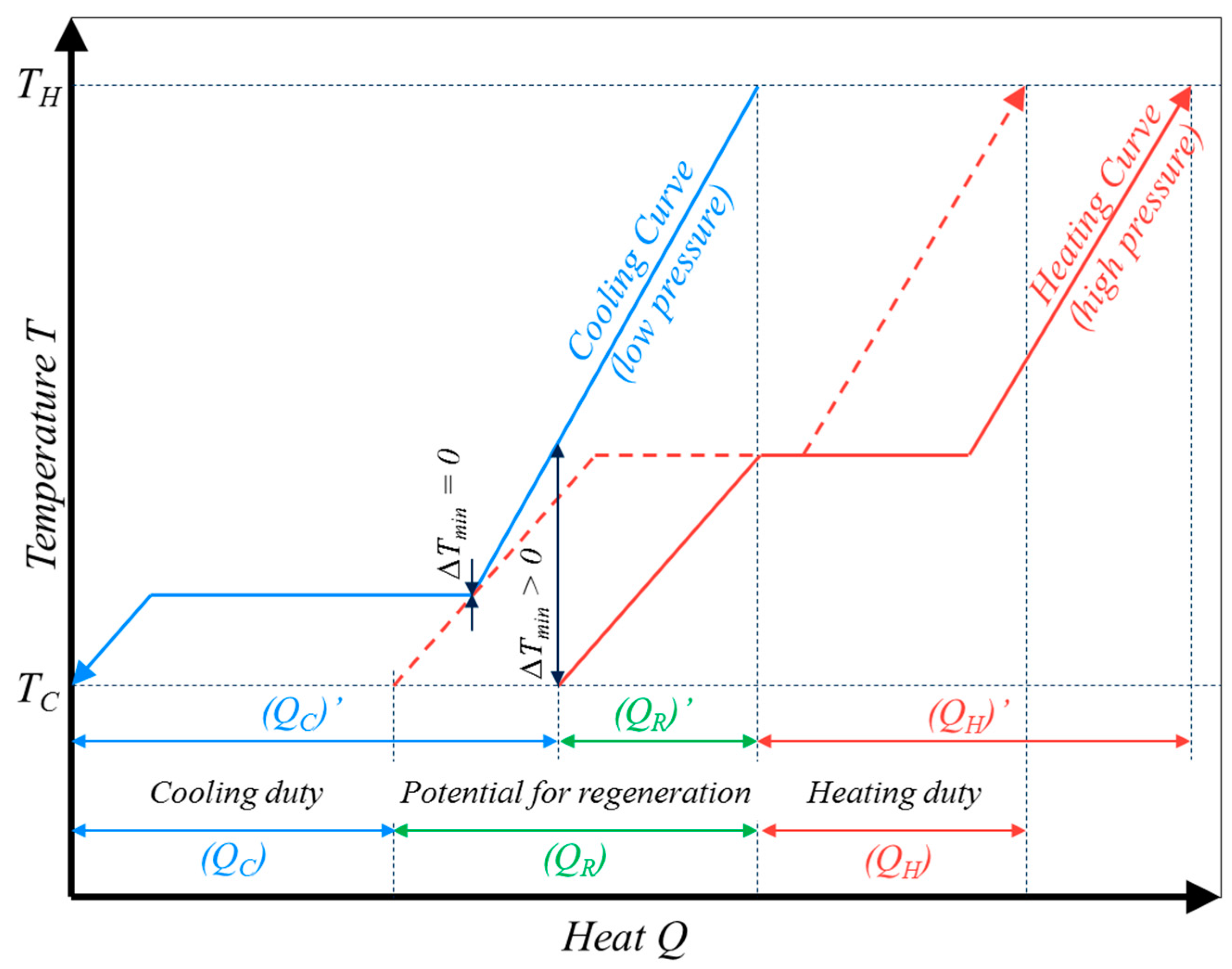
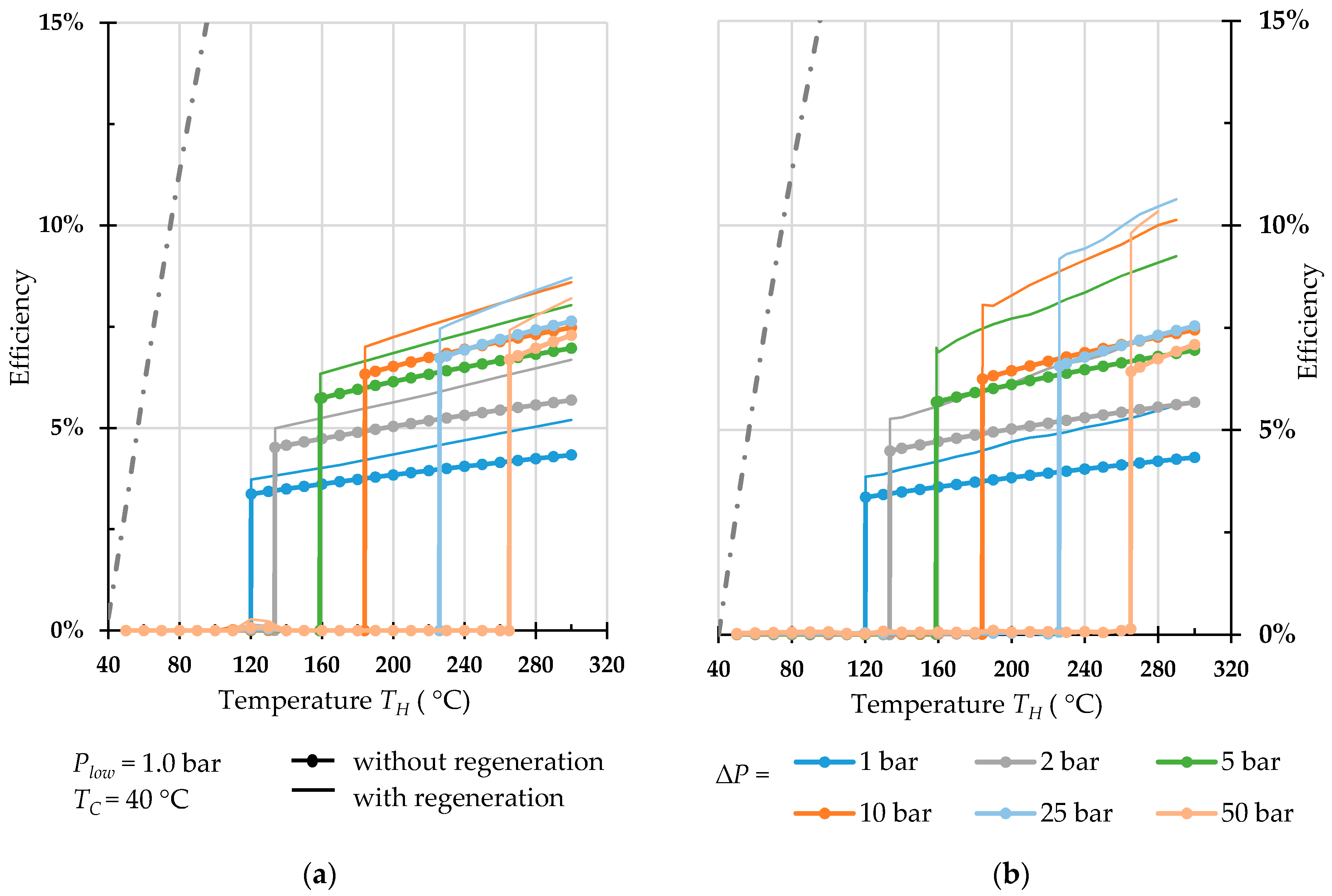
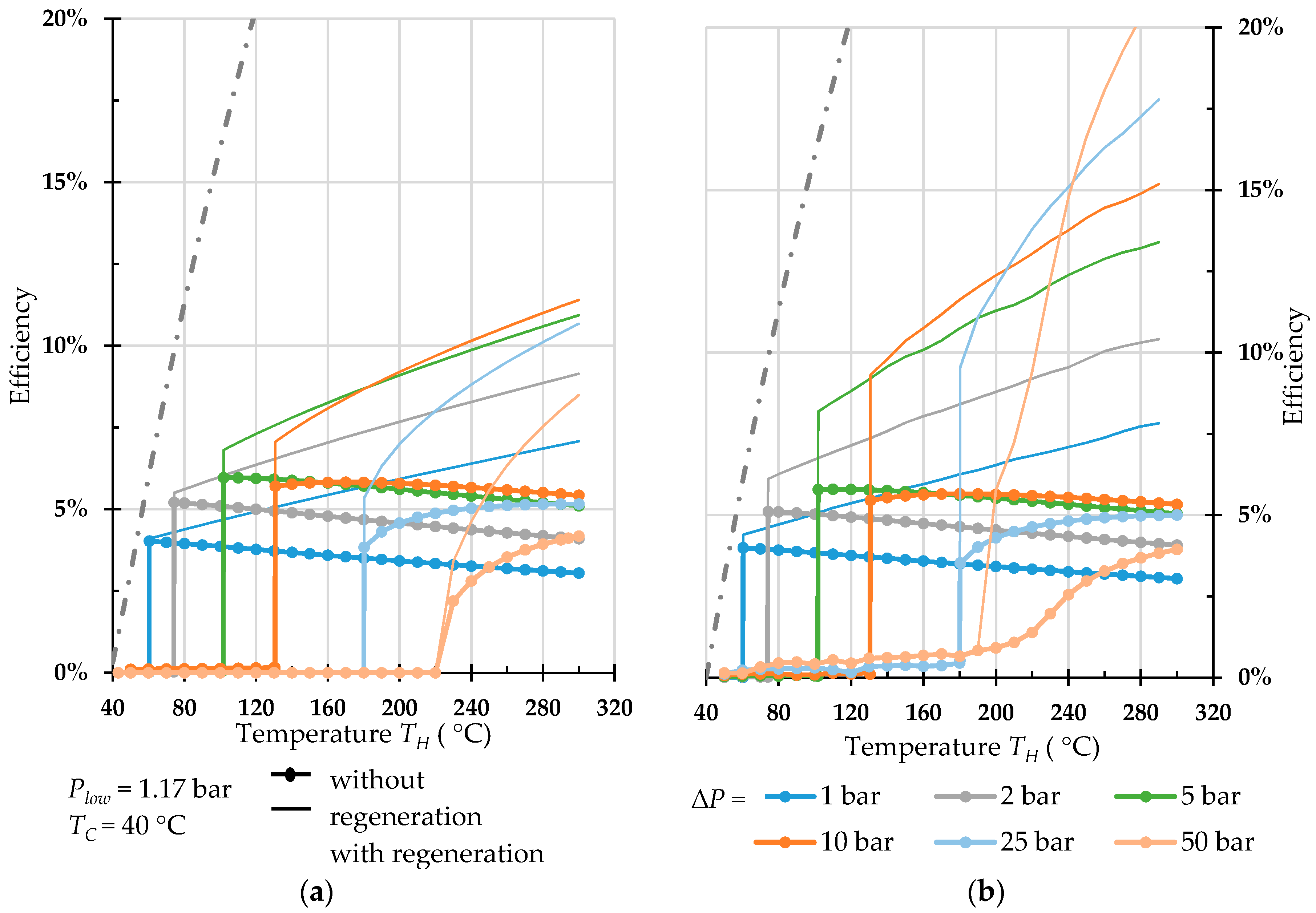

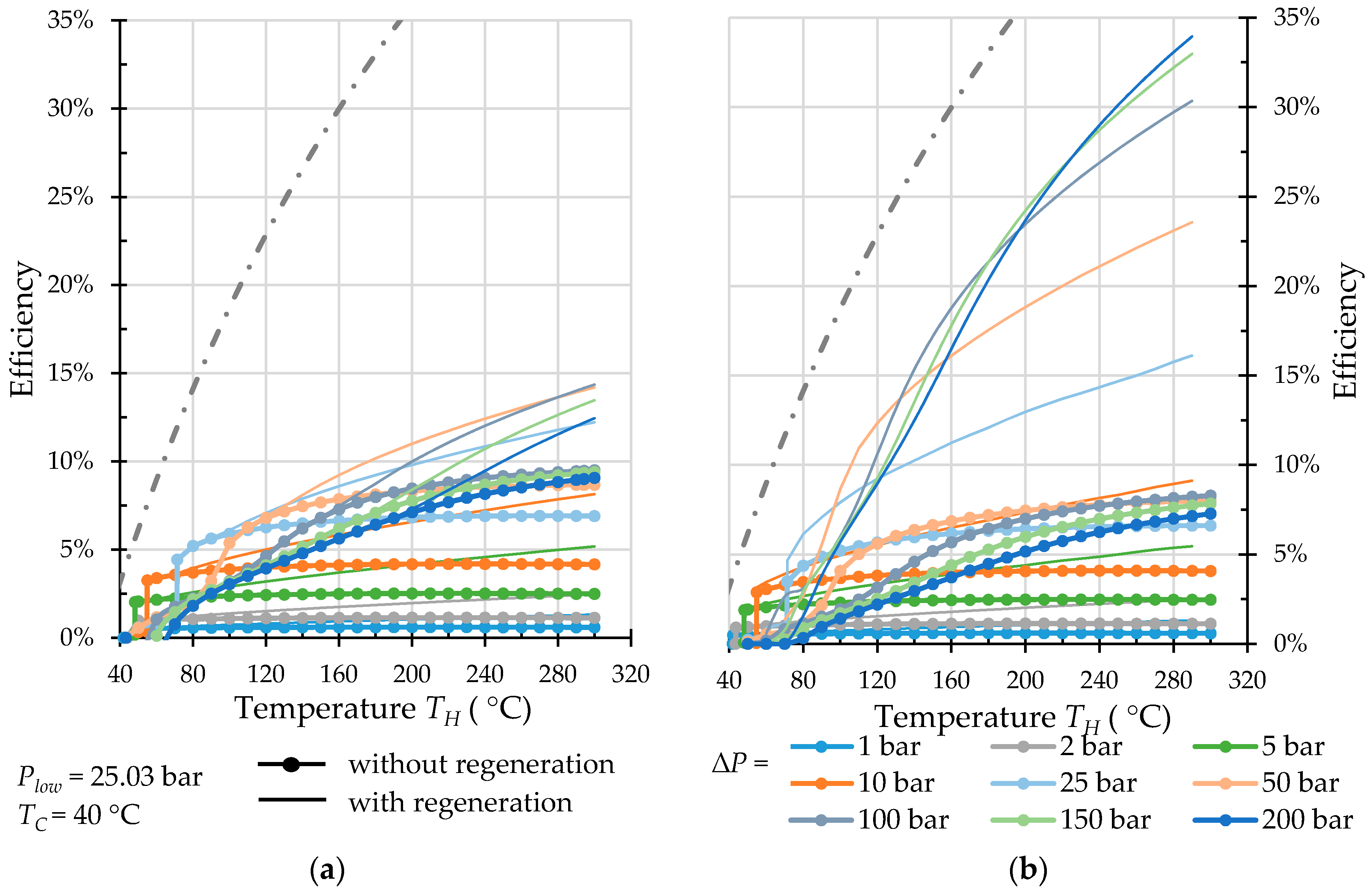
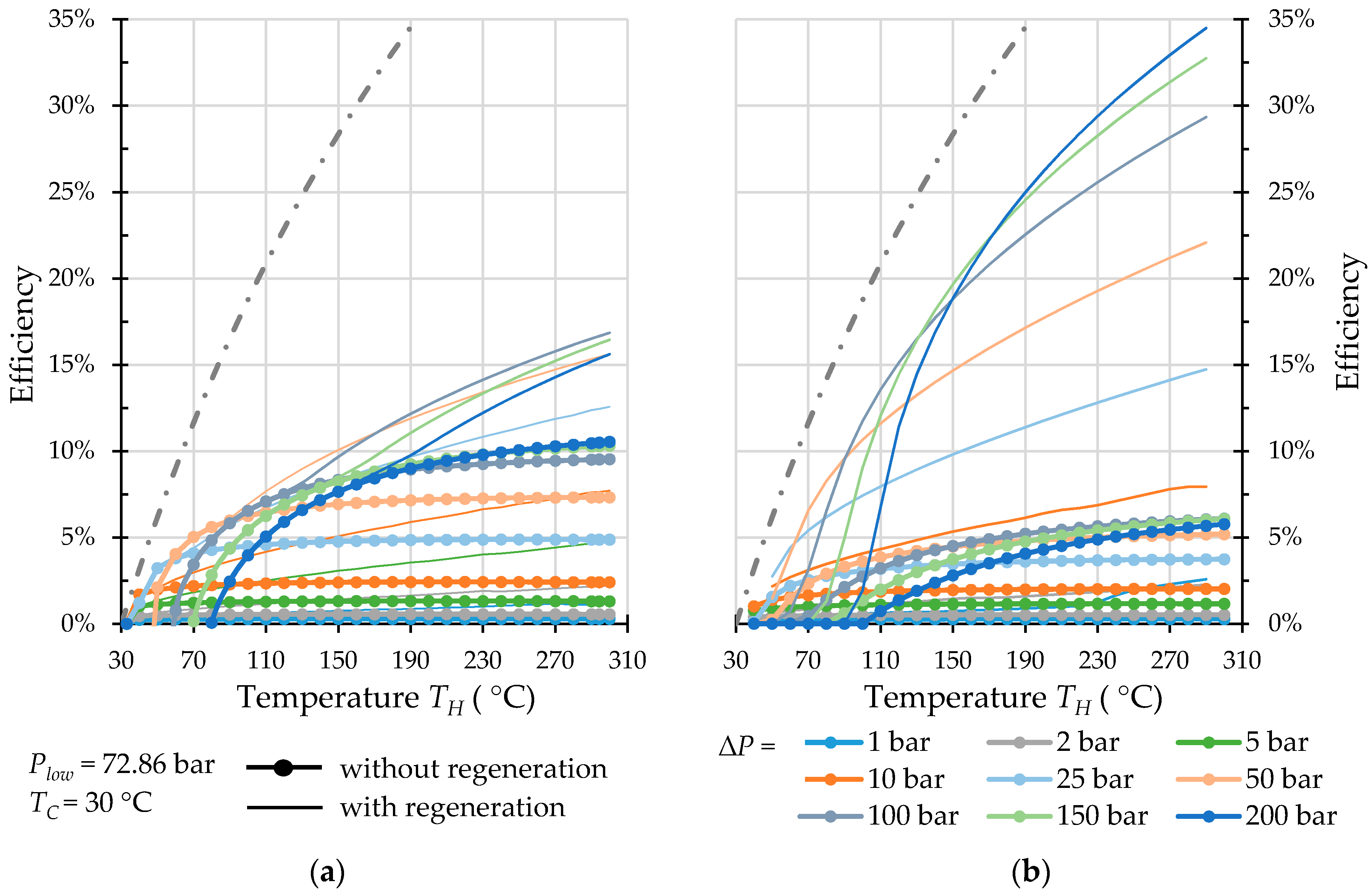

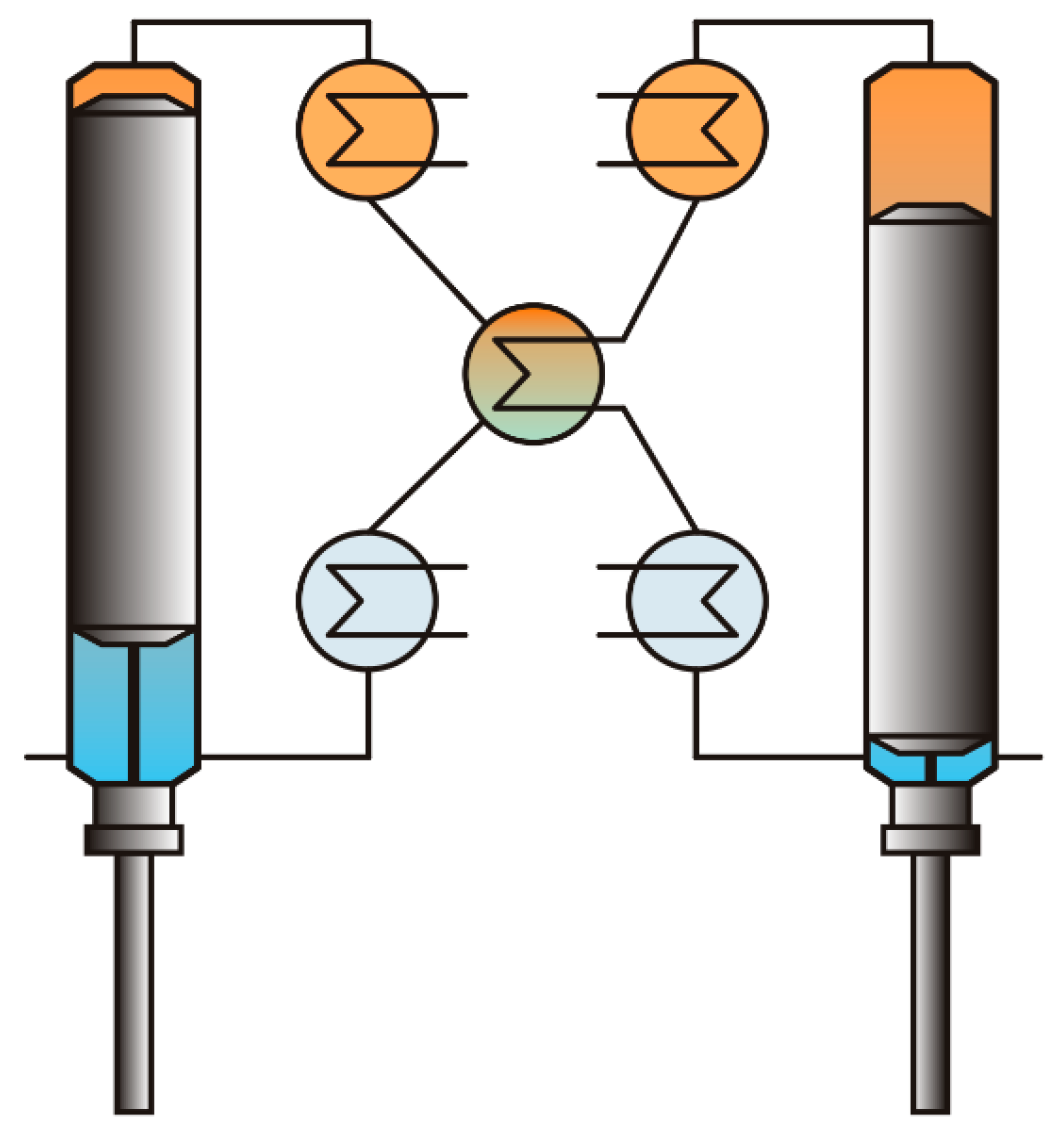
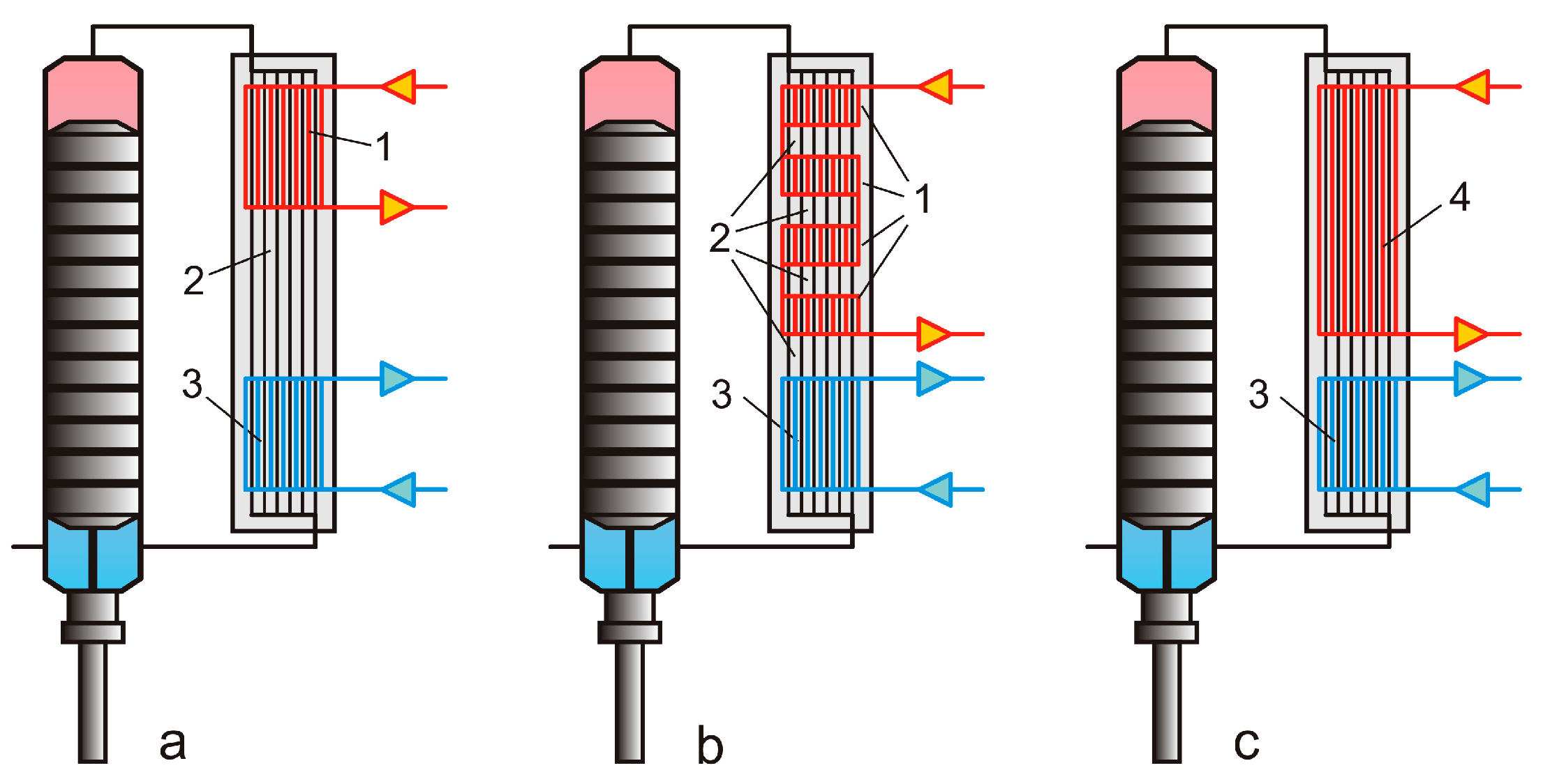
© 2018 by the authors. Licensee MDPI, Basel, Switzerland. This article is an open access article distributed under the terms and conditions of the Creative Commons Attribution (CC BY) license (http://creativecommons.org/licenses/by/4.0/).
Share and Cite
Glushenkov, M.; Kronberg, A.; Knoke, T.; Kenig, E.Y. Isobaric Expansion Engines: New Opportunities in Energy Conversion for Heat Engines, Pumps and Compressors. Energies 2018, 11, 154. https://doi.org/10.3390/en11010154
Glushenkov M, Kronberg A, Knoke T, Kenig EY. Isobaric Expansion Engines: New Opportunities in Energy Conversion for Heat Engines, Pumps and Compressors. Energies. 2018; 11(1):154. https://doi.org/10.3390/en11010154
Chicago/Turabian StyleGlushenkov, Maxim, Alexander Kronberg, Torben Knoke, and Eugeny Y. Kenig. 2018. "Isobaric Expansion Engines: New Opportunities in Energy Conversion for Heat Engines, Pumps and Compressors" Energies 11, no. 1: 154. https://doi.org/10.3390/en11010154




